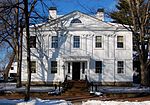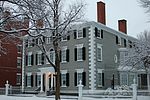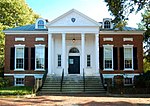Great Salem fire of 1914
1914 fires in the United States1914 in MassachusettsEvents in Essex County, MassachusettsFires in MassachusettsHistory of Salem, Massachusetts ... and 3 more
Industrial fires and explosions in the United StatesJune 1914 eventsUrban fires in the United States

The Great Salem fire of June 25, 1914, destroyed 1,376 buildings and made over 18,000 people homeless or jobless in Salem, Massachusetts, U.S. It was among the last of the great industrial fires that plagued North American cities in the 19th century. Of the families it affected – burning homes or the breadwinner's workplace – 43% were Franco-American. Because so many people were left jobless after the city's largest employer burned down, the fire encouraged the creation of the United States Employment Service.
Excerpt from the Wikipedia article Great Salem fire of 1914 (License: CC BY-SA 3.0, Authors, Images).Great Salem fire of 1914
Boston Street, Salem
Geographical coordinates (GPS) Address Nearby Places Show on map
Geographical coordinates (GPS)
| Latitude | Longitude |
|---|---|
| N 42.518630555556 ° | E -70.909355555556 ° |
Address
Walgreens
Boston Street 59
01970 Salem
Massachusetts, United States
Open on Google Maps









